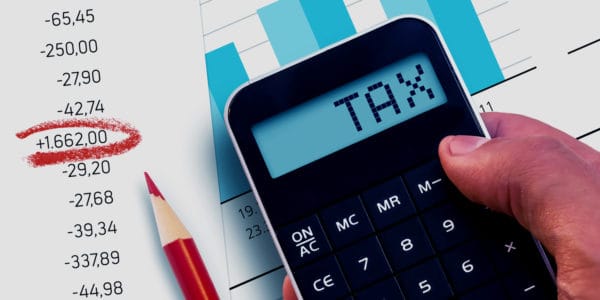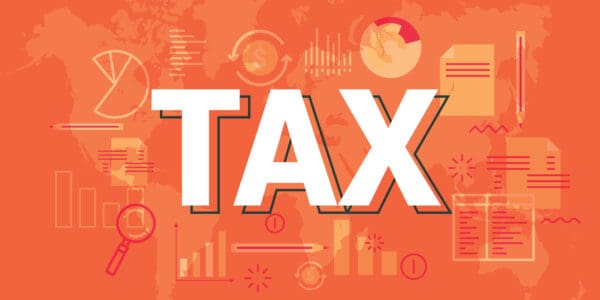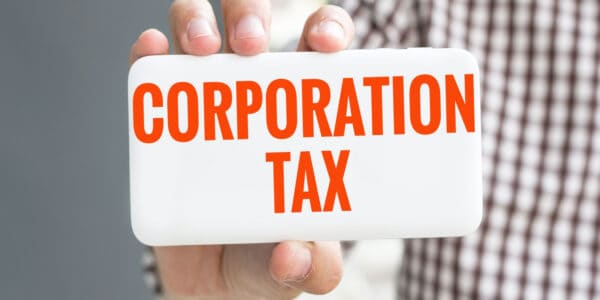Limited companies that make a profit must pay Corporation Tax every year. The tax they pay is based on the figures stated in their Company Tax Returns and annual accounts, which should be submitted to HMRC.
Key Takeaways
- Limited companies must register for Corporation Tax within three months of starting to trade to avoid penalties.
- Companies can claim various tax reliefs, including R&D and capital allowances, to reduce their Corporation Tax liability.
- Chargeable gains from asset sales are taxed based on the difference between purchase and sale prices, minus allowable costs.
What is taxed for the purposes of Corporation Tax?
Limited companies are taxed on any profits deriving from:
- trading – acquired through the general course of doing business
- investments – this could be rental income or interest made from savings etc.
- chargeable gains – where assets are sold for more than they cost (see below for a description)
Companies based in the UK pay Corporation Tax on all profits made in the UK and abroad. Whereas, companies that are not based in the UK but have offices or branches here only pay Corporation Tax on profits derived from their UK activities
What are the Corporation Tax rates?
The current rates of Corporation Tax in the UK are as follows:
- 19% ‘small profits rate’ for companies with profits up to £50,000
- 25% ‘main rate’ for companies with profits above £250,000 (applicable to all profits, not just the portion above £50,000)
Any company with profits between £50,000 and £250,000 will be liable to Corporation Tax at the main rate, reduced by a Marginal Relief.
You can use HMRC’s Marginal Relief calculator to check your eligibility and work out how much relief you can claim on your Corporation Tax liability.
However, if company profits go over £250,000, you cannot claim Marginal Relief on the portion of profits between the small profits rate and the main rate. In this situation, all profits are liable to 25% Corporation Tax.
Different rates of Corporation Tax apply to ring-fenced profits of companies involved in oil rights or extraction in the UK or UK continental shelf. GOV.UK provides official guidance on the Corporation Tax rules for companies in the UK oil and gas industry.
What are chargeable gains?
Limited companies generally pay Corporation Tax on profits derived from the sale or disposal of company assets. These profits are known as ‘chargeable gains’, and the assets can include anything owned by the company, such as:
- property and land (e.g. farming land)
- equipment and machinery (e.g. used in a factory)
- shareholdings
Any chargeable gain must be reported to HM Revenue and Customs (HMRC) on a Company Tax Return. The amount of tax paid will depend on any allowances and reliefs claimed. Intangible assets (e.g. intellectual property and business reputation) are subject to different rules for the purposes of chargeable gains (see below).
Working out a chargeable gain
The chargeable gain normally consists of the difference between the price paid for an asset and the price it was sold for (assuming it has increased in value). Any costs incurred with the purchase or disposal of the asset (e.g. solicitors’ fees, or Stamp Duty in the case of property) can be deducted.
If an asset was given away free of charge or sold for less than it was worth at the time of sale, its market value at the time of sale should be used to assess any chargeable gains.
The steps for calculating a chargeable gain are as follows:
- Work out the value of the asset when it was sold by your company – this is generally either the amount it was sold for (or the market value at the time if higher)
- Work out the value of the asset when it was bought by your company – this is generally either the amount paid (or the market value at the time if higher)
- Deduct the value of (2) from (1)
- Deduct from (3) any costs incurred by your company in connection with buying, selling or improving the asset (e.g. solicitors’ fees, or Stamp Duty in the case of property)
- In respect of any assets owned by your company prior to December 2017, HMRC’s Indexation Allowance December 2017 guide can be used to calculate the ‘inflation factor’. This should be multiplied by the amount paid for the asset, and the total deducted from (4)
- The inflation factor should also be calculated in respect of any improvements made to the asset, and this figure should be deducted from (5)
The resulting figure, once all relevant deductions have been made, is the final chargeable gain.
It is possible to ask HMRC to check any valuations made in relation to chargeable gains by submitting a “Post transaction valuation checks for Capital Gains” form (CG34).
Deduct any capital losses
Any capital losses can be deducted from the total chargeable gains, to arrive at an overall final value that needs to be taxed.
Capital losses can only be deducted from chargeable gains (i.e. they cannot be offset against trading income etc.). Furthermore, any loss claimed must be reduced by any amount which has been claimed as capital allowances.
Intangible assets
Intangible assets are dealt with differently to other assets for the purposes of capital gains. Intangible assets refer to non-physical assets such as intellectual property and goodwill (business reputation). Paragraph 18.2 of FRS (Financial Reporting Standard) 102 defines an intangible asset as “an identifiable non-monetary asset without physical substance.”
The method of taxation of chargeable gains from intangible assets depends on when they were first owned by a company. Take a look at HMRC’s Capital Gains Manual for full guidance on intangible assets in relation to capital gains.
What are Corporation Tax reliefs?
The general costs of running a business should be deducted from the profits before calculating the Corporation Tax payable.
However, expenses and benefits (e.g. company cars, health insurance, travel and entertainment expenses, childcare) are all treated differently when it comes to reporting them to HMRC and paying tax on them.
Certain expenses (e.g. costs of client entertainment) are not allowed to be offset against profits for the purposes of calculating Corporation Tax. GOV.UK provides detailed guidance in this A-Z of expenses and benefits for employers.
Capital allowances can be claimed when a company purchases assets that are required for business use, such as equipment, machinery, company cars and other vehicles.
Trading losses can be used to claim relief against Corporation Tax, in the same way as losses incurred from the sale or disposal of a capital asset or on property income. Other reliefs that can be claimed include:
- Research and Development (R&D) relief
- The Patent Box – for companies that make a profit from patented inventions
- Reliefs for creative industries – for companies that make a profit from films, ‘high-end’ television, children’s television, animation television, video games, theatrical productions, orchestral concerts, museum or gallery exhibitions etc.
- Relief on goodwill etc. – this includes intangible assets mentioned above (i.e. as defined by paragraph 18.2 of FRS 102) – e.g. unregistered trademarks
- Disincorporation relief – reliefs can be claimed on the transfer of assets when a company changes from a private limited company to a sole trader or partnership owned business
- Terminal, capital and property income losses
How do limited companies register for Corporation Tax?
Limited companies do not receive a bill for Corporation Tax, but they are required to register for Corporation Tax within three months of starting to trade.
They must work out their profit or loss for Corporation Tax (this is different from the profit and loss statement prepared for annual accounts) and the amount that needs to be paid.
Furthermore, they must pay any Corporation Tax owed (or tell HMRC that no payment is due) and file a Company Tax Return by the relevant deadlines.
How is Corporation Tax reported and what are the deadlines for payment?
After the end of each financial year, private limited companies are required to prepare and submit:
- full annual accounts (also known as ‘statutory accounts’)
- a Company Tax Return
Most limited companies will be able to use HMRC’s online services to submit these filings. This will require a Government Gateway user ID and password (these can be created online if registering for the first time).
A Companies House password and authentication code is required for anyone filing accounts with Companies House at the same time.
There are some limited companies which cannot file online (e.g. those with more than 12 company directors at any one time in the return period, or whose accounts need to be audited) – see GOV.UK for more details.
Filing and payment deadlines
Statutory accounts – the deadline for filing annual accounts is normally 9 months after the end of the company’s financial year.
Company tax return – the deadline is normally 12 months after the end of the accounting period, but it is possible to submit your tax return and accounts at the same time through HMRC’s online filing service.
Corporation Tax payment – for companies with taxable profits up to £1.5 million, the payment deadline is normally 9 months and 1 day after the end of the company’s accounting period.
The accounting period is generally the same 12-month period that is reported in the annual accounts. Large companies with taxable profits over £1.5 million must pay their corporation tax in instalments.
Note: Dormant companies do not need to file Company Tax Returns after they have told HMRC that they are dormant.
Please note that the information provided in this article is for general informational purposes only and does not constitute legal, tax, or professional advice. While our aim is that the content is accurate and up to date, it should not be relied upon as a substitute for tailored advice from qualified professionals. We strongly recommend that you seek independent legal and tax advice specific to your circumstances before acting on any information contained in this article. We accept no responsibility or liability for any loss or damage that may result from your reliance on the information provided in this article. Use of the information contained in this article is entirely at your own risk.












Join The Discussion